Home economics
Home economics, domestic science or home science is a field of study[1] that deals with the relationship between individuals, families, communities, and the environment in which they live. Home economics courses are offered internationally and across multiple educational levels. Home economics courses have been important throughout history because they gave women the opportunity to pursue higher education and vocational training in a world where only men were able to learn in such environments. In modern times, home economics teaches people of all genders important life skills, such as cooking, sewing, and finances. With the stigma the term “home economics” has earned over the years, the course is now often referred to by different terms, such as “family and consumer science.” [2]
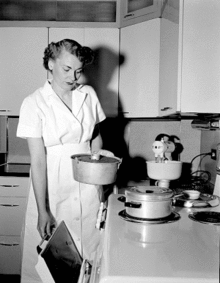
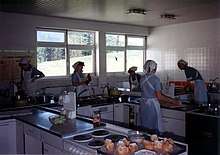
Name
Family and consumer science was previously known in the United States as home economics, often abbreviated "home ec" or "HE". In 1994, various organizations, including the American Association of Family and Consumer Sciences, adopted the new term "family and consumer science" to reflect the fact that the field covers aspects outside of home life and wellness.[2]
The field is also known by other names, including human sciences, home science, and domestic economy. In addition, home economics has a strong historic relationship to the field of human ecology, and since the 1960s a number of university-level home economics programs have been renamed "human ecology" programs, including Cornell University's program.[3]
History
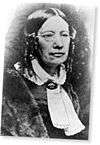
19th Century
Over the years, homemaking in the United States has been a foundational piece of the education system, particularly for women. These homemaking courses, called home economics, have had a prevalent presence in secondary and higher education since the 19th century. By definition, home economics is “the art and science of home management”, meaning that the discipline incorporates both creative and technical aspects into its teachings.[4] Home economics courses often consist of learning how to cook, how to do taxes, and how to perform child care tasks. In the United States, home economics courses have been a key part of learning the art of taking care of a household.[5] One of the first to champion the economics of running a home was Catherine Beecher, sister to Harriet Beecher Stowe.[6]
Since the 19th century, schools have been incorporating home economics courses into their education programs. In the United States, the teaching of home economics courses in higher education greatly increased with the Morrill Act of 1862. Signed by Abraham Lincoln, the Morrill Act of 1862 granted land to each state or territory in America for higher educational programs in vocational arts, specifically mechanical arts, agriculture, and home economics. Such land grants allowed for people of a wider array of social classes to receive better education in important trade skills.[7]
Home economics courses mainly taught students how to cook, sew, garden, and take care of children. The vast majority of these programs were dominated by women.[8] Home economics allowed for women to receive a better education while also preparing them for a life of settling down, doing the chores, and taking care of the children while their husbands became the breadwinners. At this time, homemaking was only accessible to middle and upper class white women whose families could afford secondary schooling.[8]
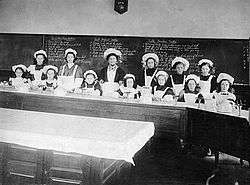
In the late 19th century, the Lake Placid Conferences took place. The conferences consisted of a group of educators working together to elevate the discipline to a legitimate profession. Originally, they wanted to call this profession "oekology", the science of right living. However, "home economics" was ultimately chosen as the official term in 1899.[9]
20th Century
Home economics in the United States education system increased in popularity in the early 20th century. It emerged as a movement to train women to be more efficient household managers. At the same moment, American families began to consume many more goods and services than they produced. To guide women in this transition, professional home economics had two major goals: to teach women to assume their new roles as modern consumers and to communicate homemakers’ needs to manufacturers and political leaders. The development of the profession progressed from its origins as an educational movement to its identity as a source of consumer expertise in the interwar period to its virtual disappearance by the 1970s.[10] An additional goal of the field was to “rationalize housework”, or lend the social status of a profession to it, based on a theory that housework could be intellectually fulfilling to women engaged in it, along with any emotional or relational benefits.[11]
In 1909, Ellen Swallow Richards founded the American Home Economics Association (now called the American Association of Family and Consumer Sciences).[9] From 1900 to 1917, more than thirty bills discussed in Congress dealt with issues of American vocational education and, by association, home economics. Americans wanted more opportunities for their young people to learn vocational skills and to learn valuable home and life skills. However, home economics was still dominated by women and women had little access to other vocational trainings. As stated by the National Education Association (NEA) on the distribution of males and females in vocations, “one-third of our menfolk are in agriculture, and one-third in non-agricultural productive areas; while two-thirds of our women are in the vocation of homemaking”.[12]
Practice homes were added to American universities in the early 1900s in order to model a living situation, although the all-women ‘team’ model used for students was different from prevailing expectations of housewives. For example, women were graded on collaboration, while households at the time assumed that women would be working independently.[11] Nevertheless, the practice homes were valued. These practicum courses took place in a variety of environments including single-family homes, apartments, and student dorm-style blocks. For a duration of a number of weeks, students lived together while taking on different roles and responsibilities, such as cooking, cleaning, interior decoration, hosting, and budgeting. Some classes also involved caring for young infants, temporarily adopted from orphanages. Childcare practicums were often included at the same time as other classwork, requiring students to configure their intellectual and home lives as compatible with one another. According to Megan Elias, “in the ideal, domestic work was as important as work done outside the home and it was performed by teams of equals who rotated roles. Each member of the team was able to live a life outside the home as well as inside the home, ideally, one that both informed her domestic work and was informed by it. This balance between home and the wider world was basic to the movement”.[11]
There was a great need across the United States to continue improving the vocational and homemaking education systems because demand for work was apparent after World War I and II.[13] Therefore, in 1914 and 1917, women's groups, political parties, and labor coalitions worked together in order to pass the Smith-Lever Act and the Smith-Hughes Act. The Smith-Lever Act of 1914 and the Smith-Hughes Act of 1917 created federal funds for "vocational education agriculture, trades and industry, and homemaking" and created the Office of Home Economics.[14][15] With this funding, the United States was able to create more homemaking educational courses all across the country.
Throughout the 1940s, Iowa State College (later University) was the only program granting a master of science in household equipment. However, this program was centered on the ideals that women should acquire practical skills and a scientifically based understanding of how technology in the household works. For example, women were required to disassemble and then reassemble kitchen machinery so they could understand basic operations and understand how to repair the equipment. In doing so, Iowa State effectively created culturally acceptable forms of physics and engineering for women in an era when these pursuits were not generally accessible to them.[16]
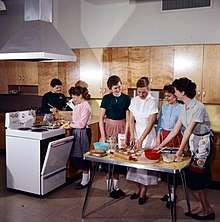
Throughout the latter part of 20th century, home economics courses became more inclusive. In 1963, Congress passed the Vocational Education Act, which granted even more funds to vocational education job training.[17] Home economics courses started being taught across the nation to both boys and girls by way of the rise of second-wave feminism. This movement pushed for gender equality, leading to equality of education. In 1970, the course became required for both men and women.[18] Starting in 1994, home economics courses in the United States began being referred to as "family and consumer science" in order to make the class appear more inclusive.[19] With desegregation and the Civil Rights Act of 1964, men and women of all backgrounds could equally learn how to sew, cook, and balance a checkbook.[20]
In the 1980s, "domestic celebrities" rose to stardom. Celebrities, such as Martha Stewart, created television programs, books, magazines, and websites about homemaking and home economics, which attested to the continued importance of independent experts and commercial mass-media organizations in facilitating technological and cultural change in consumer products and services industries.[21]
21st Century
Present day, the prevalence of home economics courses has declined. Instead, schools are focusing more on courses that prepare one for university rather than life skills.[22] Also, homemaking and home economics courses have developed a negative connotation because of the negative gender bias associated with home economics courses.[23][24] Despite this, homemaking is now socially acceptable for both men and women to partake in. In the United States, both men and women are expected to take care of the home, the children, and the finances. More women are pursuing higher education rather than homemaking. In 2016, 56.4% of college students were female as opposed to 34.5% in 1956.[25] Some schools are starting to incorporate life skill courses back into their curriculum, but as a whole, home economics courses have been in major decline in the past century.[26]
By country
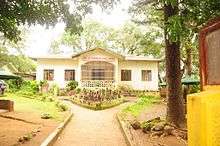
FCS is taught worldwide, as an elective or a required course in secondary education, and in many tertiary and continuing education institutions. Sometimes it is also taught in primary education. International cooperation in the field is coordinated by the International Federation for Home Economics, established in 1908.[27]
Canada
In the majority of elementary (K-6) and public (K-8) schools in Canada, home economics is not taught. General health education is provided as part of a physical education class. In High Schools or Secondary Schools, there is no specific home economics course, but students may choose related courses to take, such as Family Studies, Food and Nutrition, or Health and Safety.
Germany
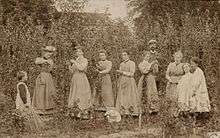
Between 1880 and 1900, the Reifenstein schools concept was initiated by Ida von Kortzfleisch, a Prussian noble woman and early German feminist. Reifenstein refers to Reifenstein im Eichsfeld, a municipality in Thuringia and site of the first permanent school. Reifensteiner Verband comprised from 1897 till 1990 about 15 own schools and cooperated with further operators. About 40 wirtschaftliche Frauenschulen, rural economist women schools were connected to the Reifensteiner concept and movement and allowed higher education for women already in the German Kaiserreich.[28] The 1913 doctorate of Johannes Kramer compared different concepts of home economic education worldwide and praised the system e.g. in Iowa.[29]
India
Many Education boards in India such as NIOS,[30] CBSE, ICSE,[31] CISCE[32] and various state boards offer home science as a subject in their courses.
Indonesia
Home economics are known in Indonesia as Family Training and Welfare (Indonesian: Pembinaan dan Kesejahteraan Keluarga, PKK). It is rooted on a 1957 conference on home economics held in Bogor; it became state policy in 1972.
Ireland
Home economics was taught to girls in the junior cycle of secondary school in the 20th century. It was added to the senior cycle Leaving Certificate in 1971, at a time when elimination of school fees was increasing participation. In subsequent decades new co-educational community schools saw more boys studying the subject. Increased third-level education participation from the 1990s saw a decline in practical subjects not favoured for third-level entry requirements, including home economics.[33]
| Year | 1971 | 1981 | 2004 | 2016 |
|---|---|---|---|---|
| Girls % | 39 | 59 | 50 | 29 |
| Boys % | 0.2 | 6.3 | 7.3 | 2.5 |
South Korea
In South Korea, the field is most commonly known as "family studies" or "family science" (가정과학, gajeong-gwahak). The field began in schools taught by Western missionaries in the late 19th century. The first college-level department of family science was established at Ewha Womans University in Seoul in 1929.[35]
Sweden
In Sweden, Home economics is commonly known as "home- and consumer studies" (hem- och konsumentkunskap). The subject is mandatory from middle years until high school in both public and private schools but is regarded as one of the smallest subjects in the Swedish school system. For many decades, the subject was only called "hemkunskap" and had a strong focus on the traditional common tasks of a home, family and practical cooking and cleaning. After the 2011 Swedish school reform, the curriculum have been restructured with more focus on the topics of health, economy and environment which includes Consumer economics as well as Consumer awareness.[36]
United Kingdom
In the UK, Home Economics was once a GCSE qualification offered to secondary school pupils, but has since been replaced with a course entitled Food and Nutrition which focuses more on the nutritional side of food to economics.
In Scotland, Home Economics was replaced by Hospitality: Practical Cooking at National 3,4 and 5 level and Health and Food Technology at National 3, 4, 5, Higher and Advanced Higher. The awarding body is the SQA.
United States
In 2012 there were only 3.5 million students enrolled in FCS secondary programs, a decrease of 38 percent over a decade. [37]
Content
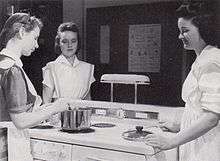
Situated in the human sciences, home economics draws from a range of disciplines to achieve optimal and sustainable living for individuals, families, and communities. Historically, home economics has been in the context of the home and household, but this has extended in the 21st century to include the wider living environments as we better understand that the capacities, choices, and priorities of individuals and families impact at all levels, ranging from the household to the local and the global community. Home economists are concerned with promoting and protecting the well-being of individuals, families, and communities; they facilitate the development of attributes for lifelong learning for paid, unpaid, and voluntary work. Home economics professionals are advocates for individuals, families, and communities.
The content of home economics comes from the synthesis of multiple disciplines. This interdisciplinary knowledge is essential because the phenomena and challenges of everyday life are not typically one-dimensional. The content of home economics courses vary, but may include: food, nutrition, and health; personal finance; family resource management and planning; textiles and clothing; shelter and housing; consumerism and consumer science; household management; design and technology; food science and hospitality; human development and family studies; communication and extension education and community services, among others. The capacity to draw from such disciplinary diversity is a strength of the profession, allowing for the development of specific interpretations of the field, as relevant to the context.
Cleaning
Home cleaning tasks can be separated into four categories: litter removal, storage of belongings, dusting, and washing of surfaces. Washing of surfaces is the most dangerous and complicated part because of the cleaning solutions. For example, hard water deposits are cleaned with acid solutions and grease is cleaned with alkaline solutions; they can both harm the skin and are reactive toward each other, potentially producing unwanted by-products. Mixing together chlorine bleach and strong acids (e.g. limescale remover containing HCl) forms chlorine gas, which is toxic. Solvents such as paint thinner and rubbing alcohol are toxic and flammable. Some disinfectants are toxic. Even dish water can require rubber gloves.
Professional associations
The AAFCS (American Association of Family & Consumer Sciences) represents teachers, educators, cooperatives, business, designers and nutritionists. The American Association of Family & Consumer Sciences (AAFCS) is the only national forum where K-12 teachers, university educators, and corporate executives collaborate to improve the quality of individual and family life.
The Association for Career and Technical Education (ACTE) is the largest American national education association dedicated to the advancement of education that prepared youth and adults for successful careers. ACTE's core purpose is to provide leadership in developing an educated, prepared, and competitive workforce. The ACTE division of Family and Consumer Sciences Education includes three sections (1) NATFACS - National Association Teachers of Family and Consumer Sciences (2) NATEFACS - National Association Teacher Educators of Family and Consumer Sciences, and (3) NASAFACS - National Association State Administrators of Family and Consumer Sciences.
The National Council on Family Relations, (NCFR) founded in 1938, is the oldest multidisciplinary, nonpartisan professional organization focused solely on family research, practice and education. They claim to be the premier professional association for the multidisciplinary understanding of families. The members’ interests—as diverse as their careers and backgrounds—are focused on topics and efforts that yield a common benefit: …understanding and strengthening families. NCFR members are professionals dedicated to understanding and strengthening families. The 3,400-plus members come from more than 35 countries and all 50 U.S. states, and include: researchers, demographers, marriage and family therapists, parent/family educators, university faculty, students, social workers, public health workers, extension specialists and faculty, ECFE teachers, clergy, counselors, K-12 teachers, and more.
See also
- Consumer economics
- Domestic technology
- Ellen Swallow Richards
- Euthenics
- Family (economics)
- Homemaker
- Human ecology
References
- International Federation for Home Economics (IFHE): Position Statement in: International Journal of Home Economics; Volume 1, Issue 1, available here
- "FAQ". American Association of Family and Consumer Sciences. Archived from the original on 2015-01-11. Retrieved 2015-01-11.
- "Why the Change to Human Ecology?". Cornell University. Retrieved 20 November 2012.
- "the definition of home economics". www.dictionary.com. Retrieved 2019-03-19.
- "IFHE Position Statement on Home Economics". www.ifhe.org (in German). Retrieved 2019-03-19.
- Biester, Charlotte E. (1952). "Catharine Beecher's Views of Home Economics". History of Education Journal. 3 (3): 88–91. ISSN 0162-8607. JSTOR 3659182.
- Council, National Research; Agriculture, Board on; System, Committee on the Future of the Colleges of Agriculture in the Land Grant (1995). Read "Colleges of Agriculture at the Land Grant Universities: A Profile" at NAP.edu. doi:10.17226/4980. ISBN 978-0-309-05295-5.
- "Encyclopedia of the Great Plains | WOMEN IN HIGHER EDUCATION". plainshumanities.unl.edu. Retrieved 2019-03-19.
- "AAFCS Brand Story" (PDF). American Association of Family & Consumer Sciences. Archived from the original (PDF) on 8 September 2013. Retrieved 20 November 2012.
- Goldstein, Carolyn M., 2012. Dust jacket. Creating Consumers: Home Economists in Twentieth-Century America. Chapel Hill: The University of North Carolina Press.
- Elias, Megan (January 2006). ""Model Mamas": The Domestic Partnership of Home Economics Pioneers Flora Rose and Martha Van Rensselaer". Journal of the History of Sexuality. 15 (1): 65–88. doi:10.1353/sex.2006.0052. JSTOR 4617244.
- Hillison, John (1995). "The Coalition that Supported the Smith-Hughes Act or a Case for Strange Bedfellows". Journal of Vocational and Technical Education. 11 (2): 4–11. ISSN 0010-3829.
- "America at Century's End". publishing.cdlib.org. Retrieved 2019-03-19.
- Alexander, Kern; Salmon, Richard G.; Alexander, F. King (2014-09-15). Financing Public Schools: Theory, Policy, and Practice. Routledge. ISBN 9781135106560.
- Goldstein, Carolyn M., 2012. Page 36. Creating Consumers: Home Economists in Twentieth-Century America. Chapel Hill: The University of North Carolina Press.
- Bix, Amy Sue (October 2002). "Gendered Technical Training and Consumerism in Home Economics, 1920-1980". Technology and Culture. 43 (4).
- "ERIC - Education Resources Information Center". eric.ed.gov. Retrieved 2019-03-19.
- Kjaersgaard, Edith (1973). "Home Economics and the Changing Roles of Men and Women". International Review of Education / Internationale Zeitschrift für Erziehungswissenschaft / Revue Internationale de l'Education. 19 (1): 125–127. doi:10.1007/BF00597786. ISSN 0020-8566. JSTOR 3442978.
- Jacobson, Lisa (2014-12-01). "Creating Consumers: Home Economists in Twentieth-Century America. By Carolyn M. Goldstein (Chapel Hill: The University of North Carolina Press, 2012. xi plus 412 pp.)". Journal of Social History. 48 (2): 452–454. doi:10.1093/jsh/shu099. ISSN 0022-4529.
- "Public School Desegregation in the United States, 1968 - 1980 — The Civil Rights Project at UCLA". www.civilrightsproject.ucla.edu. Retrieved 2019-03-19.
- Goldstein, Carolyn M., 2012. Page 299. Creating Consumers: Home Economists in Twentieth-Century America. Chapel Hill: The University of North Carolina Press.
- Rhodes, Jesse. "Is Home Economics Class Still Relevant?". Smithsonian. Retrieved 2019-03-19.
- "What Was Home Economics? -". rmc.library.cornell.edu. Retrieved 2019-03-19.
- "SAGE Journals: Your gateway to world-class journal research". doi:10.1177/0268580906059294. Cite journal requires
|journal=(help) - "Digest of Education Statistics, 2017". nces.ed.gov. Retrieved 2019-03-19.
- Noddings, Nel (2013). Education and Democracy in the 21st Century. Teachers College Press. ISBN 9780807753965.
- "About IFHE". International Federation for Home Economics. Archived from the original on 2014-12-07. Retrieved 2015-01-11.
- Ortrud Wörner-Heil: Adelige Frauen als Pionierinnen der Berufsbildung: die ländliche Hauswirtschaft und der Reifensteiner Verband kassel university press GmbH, 2010
- Johannes Kramer: Das ländlich-hauswirtschaftliche Bildungswesen in Deutschland, University of Erlangen doctorate, Fulda 1913
- http://www.nios.ac.in/currisylhs-eng.pdf
- "SCHEME OF EXAMINATIONS AND PASS CRITERIA". cbse.nic.in.
- http://www.cisce.org/data/.../27.%20Home%20Science.pdf%5B%5D
- McCloat, Amanda; Caraher, Martin (10 December 2018). "The evolution of Home Economics as a subject in Irish primary and post-primary education from the 1800s to the twenty-first century". Irish Educational Studies. 38 (3): 377–399. doi:10.1080/03323315.2018.1552605.
- Kellaghan, Thomas; Hegarty, Mary (1984). "Participation in the Leaving Certificate Examination, 1961-1980" (PDF). The Irish Journal of Education / Iris Eireannach an Oideachais. 18 (2): 80–81, Table 2. ISSN 0021-1257. JSTOR 30077318. Archived from the original (PDF) on 2017-11-14. Retrieved 2020-02-13.; "Table 5.11 Pupils in all second level schools by Leaving Certificate subject, 2004". Statistical yearbook of ireland (PDF). Ireland: Central Statistics Office. 2005. p. 119. ISBN 0-7557-7123-0. ISSN 1649-1408. Archived from the original (PDF) on 19 October 2019. Retrieved 13 February 2020.; "4.1 Ireland: Leaving Certificate candidates, 2016". Women and Men in Ireland 2016. Ireland: Central Statistics Office. Archived from the original on 14 November 2019. Retrieved 13 February 2020.
- 가정과학대학 70년사 (Gajeonggwahakdaehak 70-nyeonsa / 70 Years of the College of Family Science). Ewha Womans University Press. 1999. p. 7. ISBN 9788973003839.
- https://pubmed.ncbi.nlm.nih.gov/25105860/
- https://thetakeout.com/what-ever-happened-to-home-economics-class-1826865440
Further reading
- Goldstein, Carolyn M. (2012). Creating Consumers: Home Economists in Twentieth-Century America. Chapel Hill, NC: University of North Carolina Press. ISBN 9780807872383.
- Lee, Tsz Ngong (1999). "Home Economics". In Altenbaugh, Richard J. (ed.). Historical Dictionary of American Education. Greenwood Press. pp. 175–176. ISBN 978-0313285905.CS1 maint: ref=harv (link)
- Solomon, Barbara Miller (1985). In the Company of Educated Women. Yale University Press. ISBN 978-0300033144.CS1 maint: ref=harv (link)
- Tolley, Kim (2003). The Science Education of American Girls. RoutledgeFalmer. ISBN 978-0415934732.CS1 maint: ref=harv (link)
- Walker, Melissa (1998). "Home Economics". In Eisenmann, Linda (ed.). Historical Dictionary of Women's Education in the United States. pp. 201–206. ISBN 978-0313293238.CS1 maint: ref=harv (link)
- Woody, Thomas (1929). A History of Women's Education in the United States. 2 (1966 reprint ed.). Octagon Press.CS1 maint: ref=harv (link)
- Nutrition Education - Making it work By Dr. Janet Reynolds
- People and Practice: International Issues for Home Economists by Elanour Vaines, Doris Badir and Dianne Kieren
- Toward an Ideal of the Person Educated in Home Economics: An Invitation to Dialogue by Jane Thomas and Gale Smith
- Sustainable food futures: Lessons for home economics pedagogy and practice by Martin Caraher and Janet Reynolds
- Shapiro, Laura (2008). Perfection Salad. University of California Press.
External links
- Societies and associations
- International Federation for Home Economics (IFHE)
- American Association of Family and Consumer Sciences
- National Extension Association of Family and Consumer Sciences
- Teachers of Home Economics Specialist Association
- Resources
- "What Was Home Economics?" web pages at the Cornell University library on the history and influence of home economics
- USDA Cooperative State Research, Education, and Extension Service
- Home Economics Archive: Tradition, Research, History (HEARTH)
- Family Consumer Science Lesson Plans
- National Standards for Family and Consumer Sciences Education (India)
- Family, Career and Community Leaders of America (FCCLA)